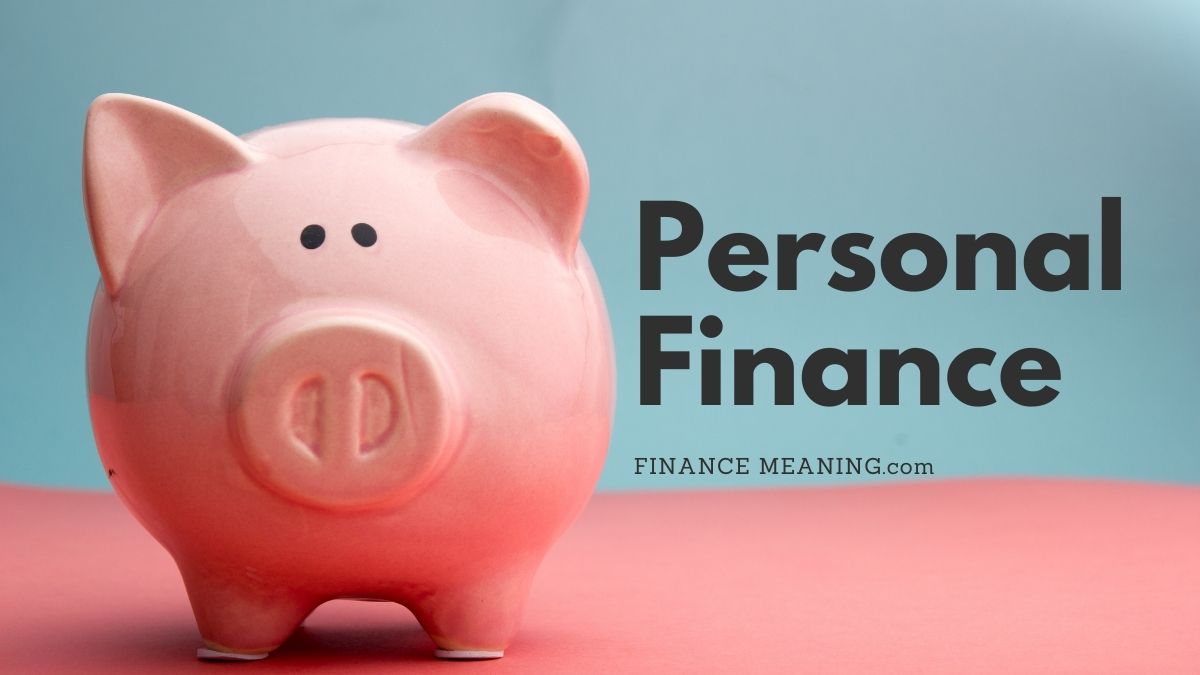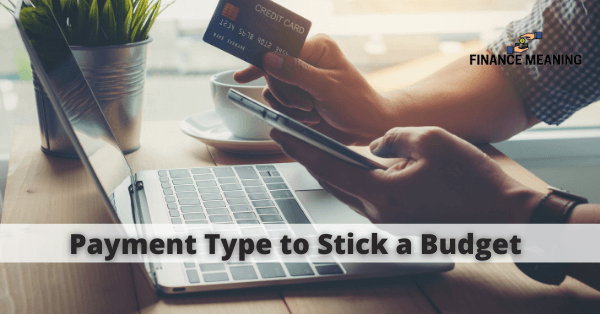In an era where technology infiltrates every aspect of our lives, the domain of personal finance is undergoing a significant transformation. The rise of next-generation personal finance tools is revolutionizing the way individuals manage their money, offering unprecedented levels of convenience, insight, and control. This article delves into the evolution of money management, the impact of AI and machine learning, and the integration of financial tools with lifestyle, providing a glimpse into the future of personal finance management.
Key Takeaways
- Next-gen personal finance tools offer enhanced features over traditional methods, including real-time tracking, automated budgeting, and personalized advice.
- AI and machine learning are pivotal in advancing personal finance apps, enabling predictive analytics and automated decision-making for better financial outcomes.
- User experience and interface design are critical in finance apps, as they directly affect user engagement and the overall effectiveness of the tool.
- Integrating personal finance management with lifestyle and wellness is a growing trend, emphasizing a holistic approach to financial health.
- Emerging technologies such as blockchain and cryptocurrencies are set to further disrupt the personal finance landscape, reshaping how we think about and manage money.
Understanding the Personal Finance Revolution


The Evolution of Money Management
The journey of money management has been transformative, evolving from simple ledger entries to sophisticated digital platforms. The shift from physical to digital has redefined our approach to personal finance.
Historically, individuals relied on paper-based systems, manual calculations, and in-person consultations to manage their finances. The digital era introduced tools like spreadsheets and basic online banking services, which marked the initial steps towards automation and accessibility.
Today, we stand at the cusp of a new era where next-gen personal finance tools offer unprecedented levels of convenience, insight, and control over our financial lives.
The progression can be summarized in the following stages:
- Pre-digital age: Physical ledgers, cash transactions, and face-to-face banking.
- Digital dawn: Introduction of ATMs, credit cards, and basic online banking.
- Automation wave: Development of spreadsheets, budgeting software, and financial planning tools.
- Next-gen evolution: Emergence of AI-driven apps, mobile banking, and real-time analytics.
Key Drivers of Change in Personal Finance
The personal finance landscape is undergoing a significant transformation, driven by a confluence of factors. Technological advancements have been pivotal, enabling the development of sophisticated tools that offer real-time insights and data-driven decision-making.
- Consumer Expectations: Today’s users demand convenience, personalization, and accessibility. They expect to manage their finances on-the-go, with the same ease as ordering food or hailing a ride.
- Regulatory Changes: Governments and financial bodies are introducing regulations that promote transparency and consumer protection, which in turn foster innovation in finance tools.
- Economic Shifts: Global economic trends and the rise of the gig economy have altered income patterns, necessitating more flexible and responsive financial planning.
The synergy between these drivers is creating an ecosystem where personal finance tools are not just optional add-ons but essential components for managing one’s financial health.
Comparing Traditional and Next-Gen Tools
The landscape of personal finance has been transformed by the advent of next-gen tools, offering a stark contrast to traditional methods. Traditional finance education frequently focuses primarily on theory and abstract notions, while next-gen tools are designed with practicality and user engagement at their core.
- Traditional tools: Often manual, paper-based, and time-consuming.
- Next-gen tools: Digital, automated, and real-time.
The shift from traditional to next-gen tools represents a paradigm change in how individuals approach money management.
Next-gen tools leverage technology to provide a more intuitive and personalized experience. They adapt to users’ financial behaviors, offering insights and recommendations that were once the domain of financial advisors. This democratization of financial knowledge empowers users to take control of their finances with confidence.
Navigating the Landscape of Finance Apps


Criteria for Choosing the Right App
Selecting the right personal finance app is crucial for effective money management. Consider your financial goals and the features that will help you achieve them. For instance, if you’re looking to track expenses, a budget tracking app might be most suitable. Here’s a quick guide to help you identify the type of app that aligns with your needs:
- Budget tracking apps: Ideal for monitoring daily expenses and income.
- Investment tracking apps: Useful for those with a portfolio of stocks, bonds, or other investments.
- Debt management apps: Designed to help users plan and track debt repayment.
- Savings goal apps: For setting and reaching specific financial targets.
- Comprehensive financial apps: Offer a broad range of features, including budgeting, investment tracking, and more.
It’s important to not only look at the functionality but also the app’s usability and design. An intuitive user interface can make a significant difference in your daily financial management.
Remember to review user feedback and ratings, as they can provide valuable insights into the app’s performance and reliability. Ultimately, the right app should empower you to take control of your finances with confidence and ease.
Security and Privacy Considerations
In the digital age, security and privacy are paramount when it comes to personal finance apps. Users must be vigilant about the potential risks, such as the threat of a lost or stolen device leading to unauthorized access to their financial accounts. To mitigate these risks, it’s essential to take proactive steps.
While no system is infallible, understanding and implementing security measures can significantly reduce the likelihood of breaches.
Here are some precautions to consider:
- Use strong, unique passwords for each financial app and change them regularly.
- Enable two-factor authentication to add an extra layer of security.
- Regularly update apps to ensure you have the latest security patches.
- Be cautious of public Wi-Fi networks when accessing financial information.
Remember, the responsibility of safeguarding your financial data not only lies with the service providers but also with you as a user.
User Experience and Interface Design
In the realm of personal finance apps, user experience (UX) and interface design (UI) are paramount. These elements not only determine the ease with which users can navigate the app but also how effectively they can manage their finances. A well-designed interface can lead to better financial decisions by presenting information in a clear, concise, and actionable manner.
The goal of UX/UI design in finance apps is to simplify complex financial data and tasks, making them accessible and understandable for the average user.
To achieve this, developers must focus on creating intuitive navigation, coherent visual hierarchies, and interactive elements that guide users through their financial journey. Personalization plays a crucial role in enhancing the user experience, as it tailors the app to meet individual needs and preferences.
- Intuitive Navigation: Ensures users can find what they need without confusion.
- Visual Hierarchy: Helps users prioritize information and tasks.
- Interactive Elements: Engage users and provide feedback on their actions.
- Personalization: Adapts the app to fit the user’s financial habits and goals.
The Impact of AI and Machine Learning


Automated Budgeting and Savings
The advent of AI in personal finance has led to a significant shift in how individuals manage their money. Automated budgeting tools now enable users to effortlessly track their spending and savings. These tools can automate savings by setting aside a percentage of your salary or rounding up transactions to save the spare funds. This approach simplifies the process of building a savings buffer without requiring active input from the user.
The convenience of automated savings is matched by the precision of AI-driven budgeting algorithms. These systems analyze spending patterns and provide tailored budgeting advice, ensuring that users can optimize their financial plans with minimal effort.
Here’s a quick overview of the benefits of automated budgeting and savings:
- Ease of use: Set up once and let the tool do the work.
- Consistency: Regular savings without the need to remember to transfer funds.
- Customization: Personalized settings to match your financial goals.
- Insight: Detailed reports and forecasts to help you understand your finances better.
Personalized Financial Advice
The advent of AI in personal finance has ushered in a new era of personalized financial advice. Tailored to individual needs, AI-driven tools analyze vast amounts of data to provide customized recommendations and strategies. This bespoke approach to financial planning can lead to more informed decision-making and improved financial outcomes.
With the integration of AI, the financial advice landscape is becoming more dynamic and responsive to individual circumstances. Users can now expect a level of personalization that was once only available through high-end financial advisors.
The benefits of personalized financial advice are manifold. Here’s a brief overview:
- Enhanced Accuracy: AI algorithms can process complex financial data with precision.
- Time Efficiency: Automated systems provide quick insights, saving users valuable time.
- Proactive Planning: AI can predict potential financial pitfalls and suggest preemptive measures.
- Continuous Learning: As AI systems learn from user behavior, the advice becomes even more tailored over time.
Predictive Analytics in Spending Habits
The integration of predictive analytics into personal finance tools marks a significant leap forward in how we manage our money. By harnessing the power of AI and machine learning, these tools can analyze vast amounts of historical financial data to forecast future spending patterns. This not only helps individuals anticipate and prepare for upcoming expenses but also enables more informed decision-making when it comes to budgeting and saving.
Predictive analytics in personal finance tools are transforming the way we think about our financial future. The ability to predict upcoming expenses and trends allows for a proactive approach to money management.
For example, consider a scenario where your finance app alerts you that your spending on dining out has increased and is likely to continue doing so. Armed with this insight, you can adjust your budget accordingly to maintain financial stability. Here’s how predictive analytics can enhance financial planning:
- Future Spending Predictions: By analyzing past spending, AI can forecast future expenses, aiding in better financial planning.
- Tailored Budgeting Suggestions: Based on spending trends, the app can provide personalized budget recommendations.
- Alert Systems for Unusual Activity: Anomalies in spending are flagged, prompting users to review their financial activity.
The potential of predictive analytics in personal finance is vast, and as technology evolves, we can expect even more sophisticated features that will further empower users to take control of their financial destinies.
Integrating Personal Finance with Lifestyle


The Role of Finance Tools in Daily Life
In the fabric of daily life, personal finance tools have become as ubiquitous as smartphones and social media. They not only assist in tracking expenses but also serve as proactive financial advisors, nudging users towards healthier spending habits and savings goals.
- Budgeting: Apps categorize expenses and income, making it easier to see where money goes.
- Bill Reminders: Notifications ensure bills are paid on time, avoiding late fees.
- Investment Tracking: Users can monitor their investment portfolios and adjust strategies accordingly.
The integration of finance tools into daily routines has led to a more informed and empowered approach to personal finance. Users are no longer passive participants in their financial journey but active managers of their economic well-being.
The convenience offered by these tools has led to a shift in how people engage with their finances. No longer is it a monthly or yearly chore to ‘balance the books,’ but a continuous, seamless part of everyday life.
Gamification of Financial Goals
The integration of gamification into personal finance tools has introduced a novel approach to achieving financial goals. By transforming the often mundane task of budgeting into an engaging experience, these tools incentivize users to stay on track with their financial objectives. Core features of gamified budgeting apps include rewards systems, progress tracking, interactive challenges, and social comparison.
Gamification leverages the competitive human spirit to foster a more proactive and positive relationship with money management.
Top gamified budgeting tools not only make the process of managing finances more enjoyable but also help to instill healthy financial habits. Users are encouraged to reach milestones and are often rewarded for their diligence and consistency. This method of financial management has shown promise in increasing user engagement and retention.
Connecting with Other Aspects of Wellness
The integration of personal finance tools with lifestyle choices marks a significant shift in how we approach financial wellness. Personal finance apps are no longer just about tracking expenses; they are becoming holistic wellness tools. They encourage users to consider financial decisions as part of their overall well-being.
By connecting financial goals with daily habits, users can see the tangible effects of their financial strategies on their quality of life. This connection fosters a more mindful approach to spending and saving, aligning financial habits with personal values and long-term wellness goals.
Personal finance tools now often include features that link to health and fitness apps, allowing for a comprehensive view of one’s lifestyle. This synergy between different aspects of wellness can lead to more informed decisions and a balanced approach to life. For example, a user might set a goal to save a certain amount of money for a wellness retreat, with progress tracked alongside their fitness milestones.
- Financial Health: Tracking spending, savings, and investments
- Physical Health: Integrating with fitness trackers and health apps
- Mental Health: Encouraging mindfulness and stress reduction through financial stability
- Social Well-being: Facilitating shared financial goals with friends or family
With their comprehensive features, seamless integration, and innovative tools, these apps have empowered individuals to take control of their financial health.
Looking Ahead: The Future of Personal Finance Management


Emerging Technologies on the Horizon
As we look to the future, the personal finance landscape is poised for transformative change. New technologies are on the brink of reshaping how we manage our money, offering unprecedented levels of convenience, insight, and control. These innovations promise to make financial management more intuitive and integrated into our daily lives.
Emerging technologies such as advanced biometrics for security, decentralized finance (DeFi) platforms, and AI-driven investment tools are just a few examples of what’s to come. The integration of these technologies will likely lead to a more personalized and automated approach to finance, where decisions are made with the support of real-time data and predictive analytics.
The potential for these technologies to democratize financial services cannot be overstated. By lowering barriers to entry and providing more tailored solutions, they have the power to make financial well-being accessible to a broader audience.
As we anticipate these developments, it’s crucial to stay informed and adaptable. The ability to leverage these technologies will be a key differentiator in achieving financial goals and securing a stable financial future.
The Role of Cryptocurrency and Blockchain
Cryptocurrency and blockchain technology are poised to transform personal finance management by offering decentralized, secure, and transparent financial transactions. Blockchain’s immutable ledger ensures that every transaction is recorded and verifiable, reducing the risk of fraud and errors.
- Decentralization: Removes the need for intermediaries, reducing costs and increasing efficiency.
- Security: Enhanced security protocols inherent in blockchain technology protect against unauthorized access and fraud.
- Transparency: Every transaction is visible and permanent, fostering trust among users.
- Accessibility: Provides financial services to unbanked or underbanked populations.
The integration of these technologies into personal finance tools could lead to more autonomous financial decision-making, as users gain direct control over their financial assets without the traditional banking infrastructure.
Shifting Attitudes Towards Money and Investments
The landscape of personal finance is not just being reshaped by technology, but also by the evolving attitudes of consumers towards money and investments. Economic uncertainty has prompted a shift in how individuals approach their financial planning, with a growing emphasis on flexibility and adaptability.
In response to a volatile economic environment, many are seeking to diversify their portfolios and explore alternative investment strategies. This trend is not only about spreading risk but also about seizing opportunities in a rapidly changing market.
The following points highlight the changing attitudes:
- Increased interest in sustainable and socially responsible investments.
- Preference for liquidity and short-term investment horizons.
- Greater reliance on financial education and resources to make informed decisions.
- The rise of peer-to-peer lending and crowdfunding platforms as investment avenues.
Conclusion
As we stand on the brink of a new era in personal finance, the next-gen tools we’ve explored in this article are not just conveniences but necessities for the modern individual. They empower users with real-time insights, personalized advice, and seamless integration across financial platforms, revolutionizing the way we manage our money. The rise of these innovative solutions marks a significant shift towards a more informed, efficient, and secure financial future. Embracing these tools can lead to better financial health, smarter investment choices, and ultimately, a more prosperous life. As technology continues to evolve, one can only imagine the further advancements that lie ahead in the realm of personal finance management.
Frequently Asked Questions
What are next-gen personal finance tools?
Next-gen personal finance tools are advanced software applications that leverage cutting-edge technologies like AI, machine learning, and data analytics to help individuals manage their finances more effectively. They offer features such as automated budgeting, personalized financial advice, and predictive analytics for spending habits.
How do these tools differ from traditional finance management methods?
Traditional finance management often involves manual tracking and analysis, which can be time-consuming and error-prone. Next-gen tools automate many of these processes, provide real-time insights, and offer more personalized and adaptive financial strategies.
What should I consider when choosing a personal finance app?
When selecting a personal finance app, consider factors such as the app’s security features, privacy policies, user interface, the range of financial management features it offers, its integration capabilities with your financial institutions, and user reviews.
How do AI and machine learning impact personal finance management?
AI and machine learning algorithms can analyze large amounts of financial data to identify patterns, predict future spending, and provide personalized recommendations. They can also automate tasks like categorizing expenses and calculating budgets.
Can personal finance tools help me with investment decisions?
Many next-gen personal finance tools include features that assist with investment decisions by analyzing market trends, assessing risk profiles, and suggesting investment strategies tailored to your financial goals and risk tolerance.
What is the future of personal finance management?
The future of personal finance management is likely to see increased integration with various aspects of users’ lifestyles, more sophisticated AI-driven advice, and the incorporation of emerging technologies like blockchain and cryptocurrency into financial planning and transactions.




![Venmo vs. PayPal: Which One Should You Choose? [2021] 15 Venmo vs. PayPal](https://financemeaning.com/wp-content/uploads/2021/08/Venmo-vs.-PayPal.png)
![FreshBooks vs. QuickBooks: Detailed Comparison of Pricing and Features [2021] 16 FreshBooks vs. QuickBooks](https://financemeaning.com/wp-content/uploads/2021/09/FreshBooks-vs.-QuickBooks.png)